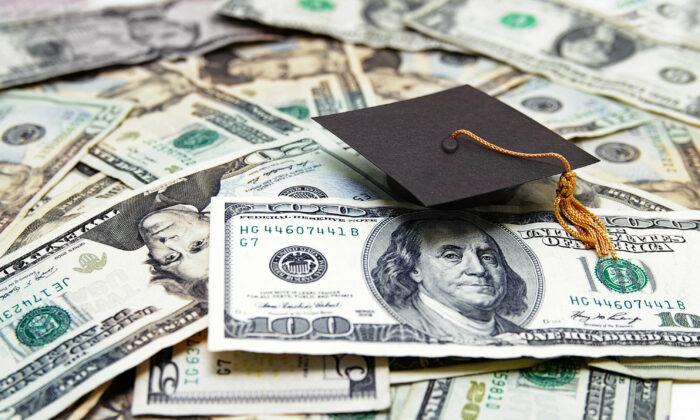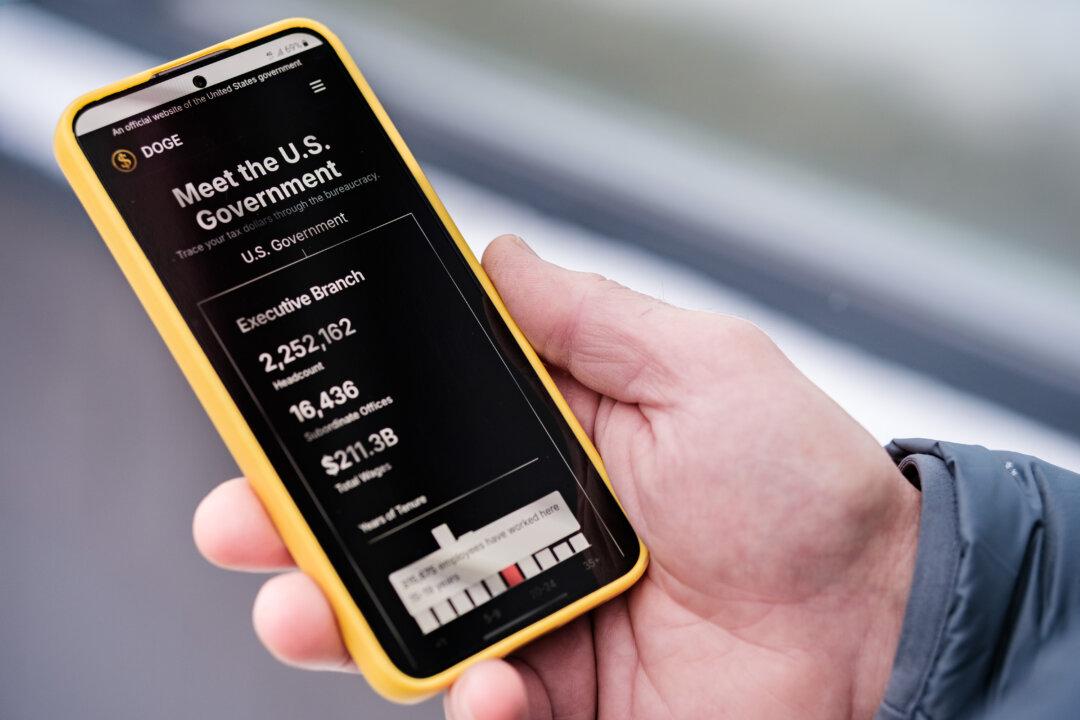It has been more than a week, and there is still no coherent answer out of the Biden administration to the question of who will pay for student loan forgiveness, which may cost Americans anywhere between $300–500 billion by the time it’s all done.
Yet there has been no clear response from the U.S. government. What the Biden administration has said is that the loan forgiveness program will be fully paid for by deficit reduction. This is a nonsensical answer. It conflates an income item (reduced deficit spending, which is by definition spending money that the government doesn’t have) with a balance sheet item (increased national debt).
Total U.S. federal tax revenue is about $4 trillion. However, in fiscal 2021, the U.S. federal government spent $6.8 trillion. So, in one year, the deficit grew by about $2.8 trillion. In fiscal 2020, the deficit was more than $3 trillion. Both years were extraordinary due to pandemic relief spending. Nonetheless, the last time the federal government brought in more money than it spent was fiscal 2001. Let that sink in. While the deficit has come down from these outrageous levels to a projected $1.0 trillion loss for fiscal 2022, it is still adding to the cumulative deficit. This isn’t “savings” which can be used elsewhere; it’s simply slowing the rate at which our government is digging a deeper fiscal hole for all of us.
The result of this runaway spending is that national debt has skyrocketed. At the beginning of 2007—i.e., before the global financial crisis—total U.S. debt was $8.5 trillion, considered an enormous number at the time. By 2015, it had more than doubled, to $19.5 trillion, largely because of quantitative easing and spending to bail out the banks and to try to get the economy moving again.
Beware the Hidden Tax
The proposed student debt forgiveness program will simply add another $300–500 billion to the total amount of U.S. government debt. But that’s not so straightforward, because increasing the national debt is a hidden tax on all Americans.When financial investors such as pension funds and foreign countries are willing to buy U.S. debt at close to zero interest, which was the case for the past two decades, this tax stays largely hidden from Americans’ view and the game continues. But when government spending runs amok, and investors start balking, trouble looms. Governments refuse to stop spending, just like a junkie who simply can’t stop using, even though he knows it’s eventually going to kill him.
When the private market gets concerned about all of this and stops buying, which has happened over the past two years, the Federal Reserve is forced to buy the government’s debt so that the government can keep spending. This is called “monetizing the debt.” Before the global financial crisis of 2007–09, the Fed’s balance sheet totaled less than $900 billion. It took nearly 100 years from the creation of the Fed in 1913 to grow to that level. But in just 15 years, by August 2022, the Fed’s balance sheet has grown to nearly $9 trillion, a ten-fold increase. These extra $8 trillion have had nowhere to go but to produce the asset bubbles and price inflation that America is experiencing.
Overly indebted governments, typically the largest debtor in an economy, have only three choices at this point: repudiation (i.e., to default on the debt), raising taxes on corporations and individuals, or generalizing the taxation through systemic price inflation.
While some poor and developing countries have chosen to default on their debt, this doesn’t work for a large, advanced economy, and especially not one that is the issuer of the global reserve currency, which is the U.S. dollar, used in approximately 70 percent of all financial transactions around the globe.
Taxation doesn’t really work either, but that doesn’t stop governments from trying. Imposing overly heavy taxes eventually backfires. People stop paying or go underground, unemployment rises, businesses shut down or move offshore, and economic activity grinds to a standstill. Governments that overtax are eventually overthrown.
The only remaining choice for the U.S. government is to allow inflation to run and thereby impose a hidden tax on Americans. Despite evidence of slowing price inflation growth over the past two months, we can expect an inflationary trend to continue over the long run. Student debt cancellation will only make it worse.





